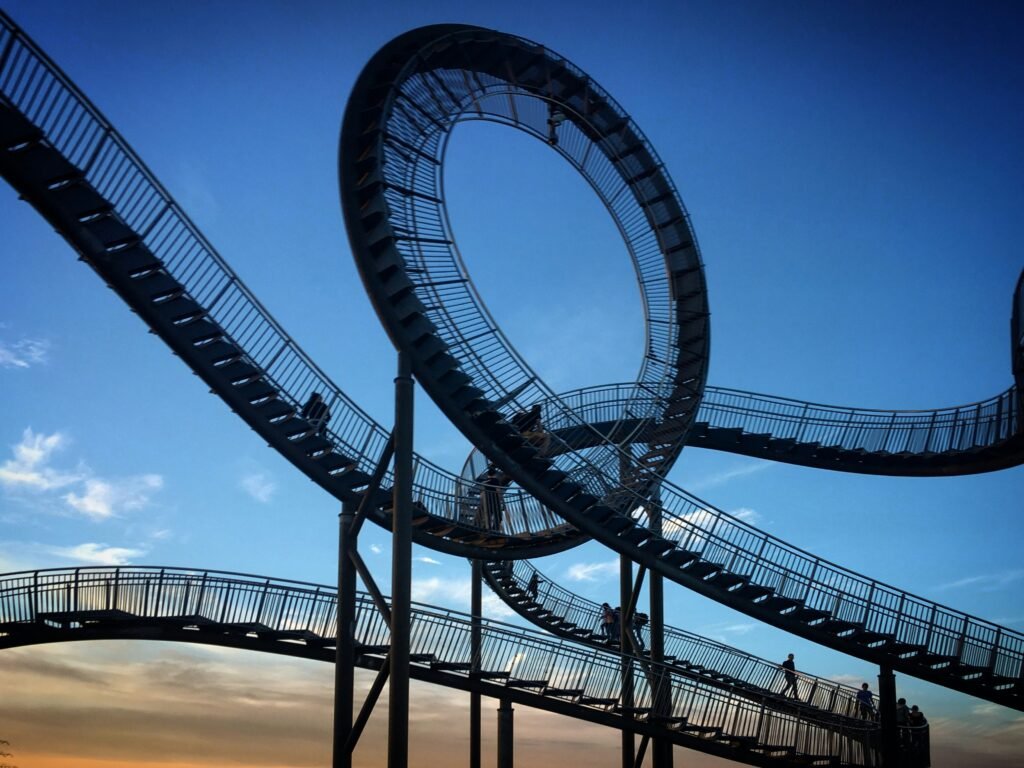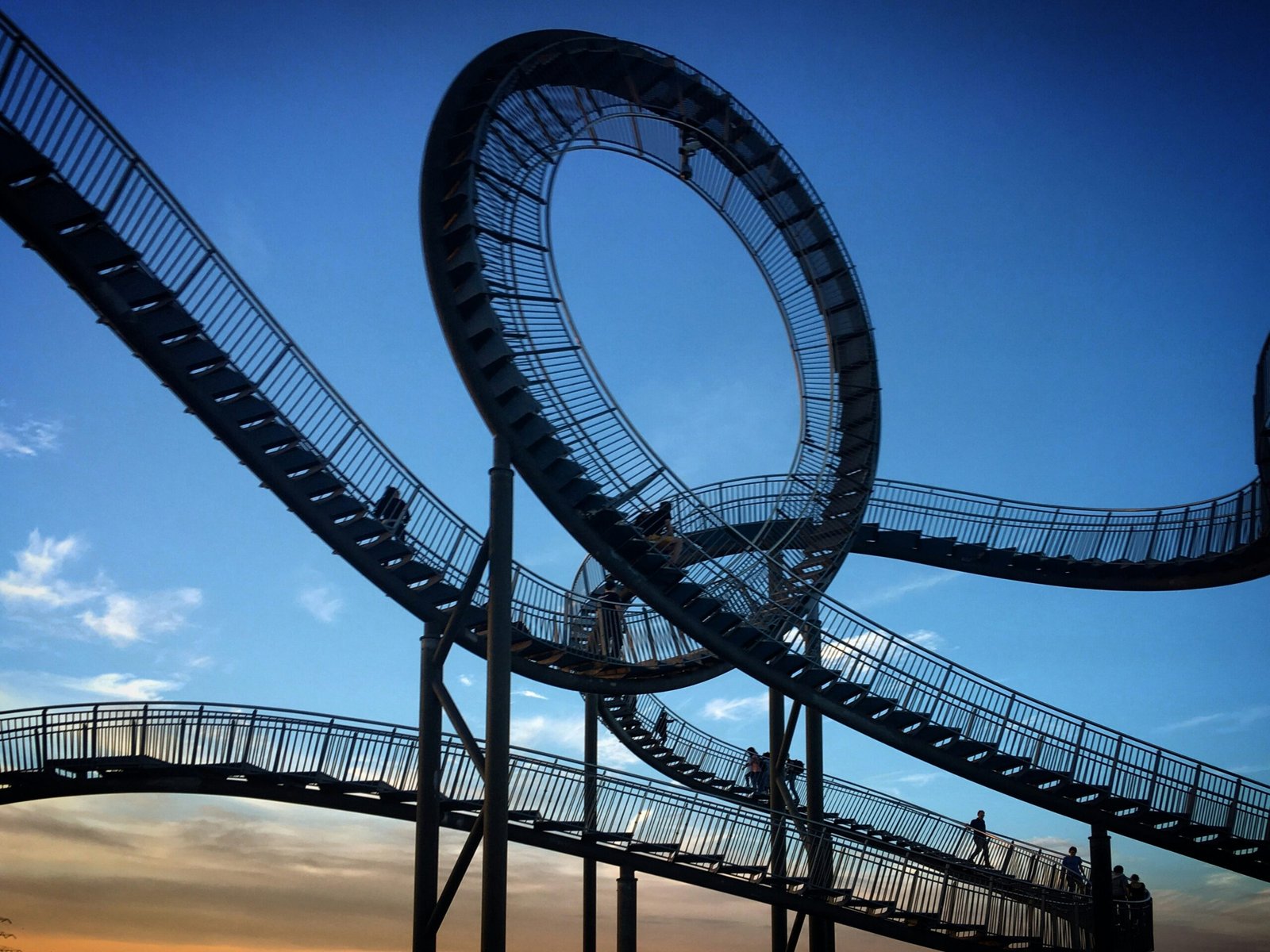As parents, we all want to provide our children with activities that are not only fun but also educational. Introducing your child to the world of engineering through play is one of the most effective ways to spark their interest in science and technology. Roller coaster building sets offer a perfect blend of excitement and learning, allowing kids to explore basic engineering concepts while using their creativity to design thrilling rides. In this article, we’ll explore five simple roller coaster designs that are easy to build and will set your child on the path to becoming an aspiring engineer.
1. The Classic Loop-the-Loop Coaster

Overview
The Loop-the-Loop is a classic roller coaster design that introduces children to the concept of gravity and centripetal force. This simple design involves a basic track with a loop where the car must gain enough speed to make it through without falling.
How It Works
The car starts at a high point, gaining potential energy. As it descends, the potential energy converts into kinetic energy, propelling the car through the loop. The design teaches children how height and speed are critical to maintaining motion through curved paths.
Why It’s Great for Beginners
- Easy to Assemble: This design is straightforward, requiring minimal pieces.
- Concepts Introduced: Gravity, kinetic and potential energy, and centripetal force.
- Creative Options: Kids can experiment with the height of the starting point to see how it affects the car’s speed and success in completing the loop.
2. The Zigzag Drop
Overview
The Zigzag Drop roller coaster features a series of sharp turns and drops that introduce children to the concept of momentum and friction. The design challenges the builder to create a path that allows the car to maintain enough speed while navigating sharp corners.
How It Works
As the car travels down the initial drop, it picks up speed (momentum). The sharp turns (zigzags) require careful balancing of speed and friction to keep the car on track without flying off.
Why It’s Great for Beginners
- Focus on Momentum: This design helps kids understand how momentum and friction work together to control movement.
- Customizable: Children can add more turns or adjust the steepness of the drops to see how these changes affect the ride.
- Engineering Challenge: Encourages problem-solving as they work to keep the car on the track.
3. The Spiral Slide

Overview
The Spiral Slide coaster features a track that spirals downward in a circular motion. This design introduces children to the concept of angular momentum and the effects of curved paths on speed and stability.
How It Works
As the car spirals down the track, it gains speed due to gravity while angular momentum keeps it moving in a circular path. The challenge lies in creating a smooth spiral that ensures the car doesn’t lose balance.
Why It’s Great for Beginners
- Visual Appeal: The spiral design is visually striking and engaging for kids.
- Learning Focus: Introduces angular momentum and the importance of smooth track design.
- Creative Freedom: Kids can experiment with the tightness of the spiral and the height of the drop to see how these factors influence the ride.
4. The Dual-Rail Race Track
Overview
The Dual-Rail Race Track is a competitive design where two parallel tracks allow for a race between two cars. This design introduces children to the concepts of symmetry, balance, and competition in engineering.
How It Works
Two cars are released simultaneously from the same height, racing down parallel tracks with identical layouts. The challenge lies in ensuring both tracks are equally balanced so that the race is fair.
Why It’s Great for Beginners
- Interactive Play: Encourages competition and cooperative play.
- Concepts Introduced: Symmetry, balance, and fairness in design.
- Customizable: Kids can tweak the track designs to see how slight changes can affect the race outcomes.
5. The Jump Track
Overview
The Jump Track is an exciting design where the car jumps across a gap in the track before landing on the other side. This design introduces children to concepts like trajectory, speed, and the importance of precise measurements in engineering.
How It Works
The car gains speed as it approaches the jump, using momentum to soar across the gap. The challenge is ensuring the car has enough speed and that the gap is appropriately sized to allow for a smooth landing.
Why It’s Great for Beginners
- Thrill Factor: The jump adds an element of excitement and challenge.
- Focus on Precision: Teaches the importance of accurate measurements and calculations.
- Experimentation: Kids can adjust the gap size, the height of the drop, and the speed to perfect the jump.
Encouraging Your Child’s Engineering Journey
As a parent, your role in fostering your child’s interest in engineering is crucial. Roller coaster building sets are more than just toys—they’re tools for learning that can ignite a passion for science and technology. Here’s how you can motivate your child to dive into the world of roller coaster engineering:
- Celebrate Curiosity: Encourage your child to ask questions about how and why things work. Their natural curiosity is the key to learning and discovery.
- Provide Support: Be there to guide them through challenges, but allow them to solve problems on their own. This builds confidence and critical thinking skills.
- Encourage Creativity: Let your child’s imagination run wild. Whether they’re sticking to the designs or creating their own, encourage their creativity and innovation.
- Make It a Family Activity: Join in the fun! Building together not only strengthens family bonds but also shows your child that learning can be a shared, enjoyable experience.
Introducing your child to engineering through roller coaster building is a fantastic way to combine play with education. These five simple designs offer a starting point that will challenge your child’s problem-solving skills, enhance their creativity, and give them a taste of the exciting world of engineering. By fostering their interest in STEAM concepts through fun and engaging activities, you’re setting them on a path to becoming future innovators, thinkers, and problem-solvers. So, grab a building set and watch your child’s engineering journey take off!
